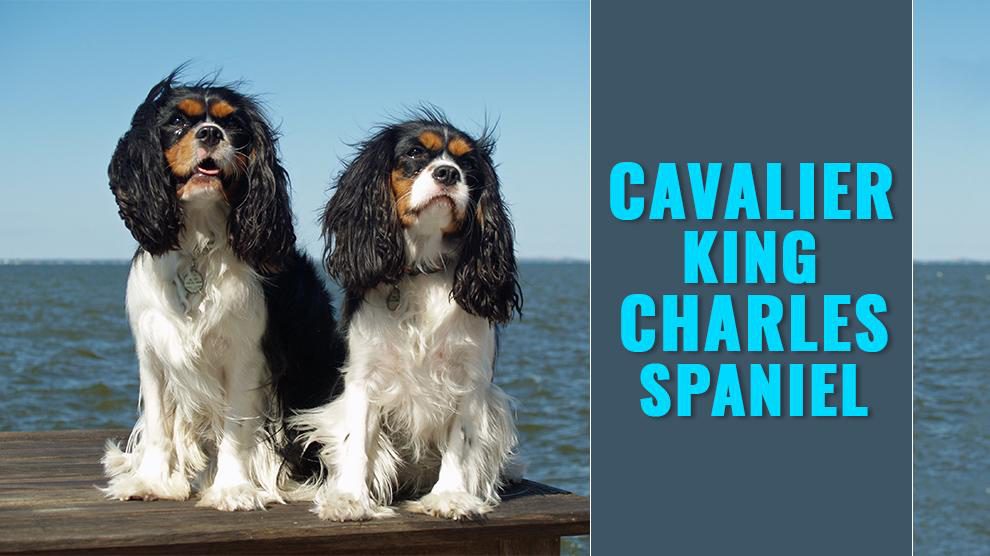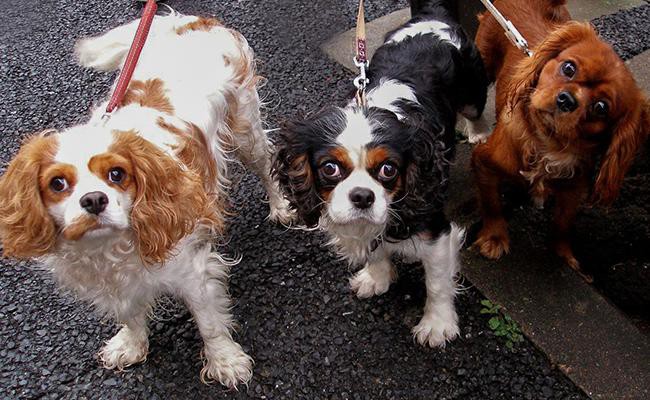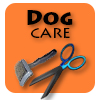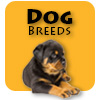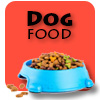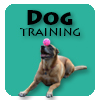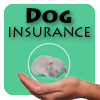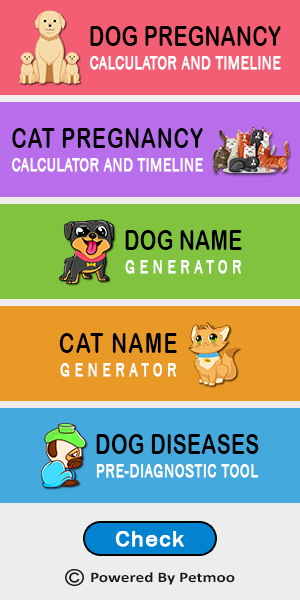Dog Pregnancy Calculator And Timeline
In an incredibly competitive world of dog breeds for good looks, Cavalier King Charles Spaniel is one of the most photogenic out there.
Those phenomenally floppy ears, perplexed head-tilts, heart-melting twinkling eyes, and just-pudgy-enough stature make this breed conclusively cute.
These little puppies sporting lovely silky coats could even melt the coldest Cruella de Vil-hearted person. Of course, we agree, there’s more to a dog than just its looks.
Beloved contender for the title of top tail-wagger, the Cavalier King Charles Spaniel is pleasant, playful, and a happy guy.
Often called a “sporting toy breed” because of his combination of spaniel and toy traits, Cavalier King Charles spaniels are consummate lap dogs.
Known for their friendliness and fondness, they love nothing more than cuddling up with their owners.
Cavalier King Charles Spaniel Breed Characteristics Sheet
- Origin: United Kingdom
- Size: Small
- Dog Breed Group: Toy group/ Companion Breeds
- Purebred: Yes
- Lifespan: 10-16 years
- Height: Male – 11-13 inches (30-33 cm), Female – 11-13 inches (30-33 cm)
- Weight: Males – 5 – 9 kg (11-19 lbs) and Females – 4.5-8 Kg (9-17 lbs)
- Coat Appearance: Double coat
- Coat Colors: Black and tan, a black coat with tan markings, Blenheim, a white coat with dark chestnut markings, Ruby, a reddish-brown coat with no markings, Tricolor, a white coat with black and tan markings
- Temperament: Adorable, athletic, affectionate, Cheerful, bright Energetic, Friendly, happy-go-lucky, Lively, playful, pleasant, Responsive, Social, spirited
- Good With Children: Yes
- Intelligence Level: High
- Good With Pets: Yes
- Hypoallergenic: No
- Grooming: High
- Shedding: Moderate to high
- Barking: Barks when necessary
- Suitable For Apartments: Yes
- Need For Exercise: High
- Easy To Train: Yes
- Good For First Time Owners: Yes
- Health Issues: Mitral Valve Disease, hip dysplasia, Syringomyelia, Keratoconjunctivitis Sicca, and some eye problems
- Litter Size: 2-6 puppies average-5
- Average Price: $800 and $2500
Cavalier King Charles Spaniel History
The Cavalier King Charles spaniel is itself a fairly new breed, although its precursor, the toy spaniel, was extremely popular till the 18th century.
The Queen of Scots brought Cavs from France to Scotland in the 16th century. There, they graced the laps of royalty and cuddled in the beds of princess and queens, lucky guys, we’re not even the kings were allowed frequently.
The dogs were named after King Charles II, who was very fond of the breed. It was speculated that the king would not go anywhere without his spaniel army comprising of 3 Cavs.
His love was so strong that many even blamed the king of neglecting his kingdom in favor of Cavs.
These calm and curious creatures seem perfect to cozy up and confer upon oodles and oodles of love. The tail-wagging cuteness doesn’t end there; keep reading to know about more about these rare ruffers!
Cavalier King Charles Spaniel Size And Lifespan
Cavalier King Charles Spaniel Size
Height – Male – 11-13 inches (30-33 cm), Female – 11-13 inches (30-33 cm)
Weight – Males – 5 – 9 kg (11-19 lbs) and Females – 4.5-8 Kg (9-17 lbs)
Cavalier King Charles Spaniel Lifespan
A healthy Cavalier should expect to enjoy a life expectancy of between 10 – 16 years when properly cared for and fed a good quality diet to suit their ages.
Is This A Right Dog Breed For You?
If you want a dog who…
- Is soft, squashy and striking with large expressive eyes and a cute feathered coat
- Loves the comfort, snuggling on soft pillows and cuddling in laps
- Is also more sporty and have outdoorsy instincts
- Placid and phlegmatic with others
- Considerate, courteous and responds well.
A Cavie spaniel may be right for you.
If you don’t want to deal with…
- Diffidence and shyness in some lines, or when not properly socialized
- “Separation anxiety” when left alone which can lead to destructiveness and barking
- Chasing instincts – True to spaniel tendencies, they enjoy romping around so he does scamper into the road in quest of a fluttering bird
- Lots of shedding, regular brushing, and combing
- Frequent ear infections due to their long, pendulous ears
A Cavie Spaniel may not be right for you
Cavalier King Charles Spaniel Appearance Coat Color
Cavalier King Charles Spaniel Coat Color
- Black and tan, a black coat with tan markings
- Blenheim, a white coat with dark chestnut markings
- Ruby, a reddish-brown coat with no markings
- Tricolor, a white coat with black and tan markings
Cavalier King Charles Spaniel Appearance
Larger than their King Charles cousins, the Cavalier has retained sporty nature of its toy spaniel ancestors till date. A graceful, docile, gentle dog with a kind expression and a gregarious perky character, display a free action when moving.
Facial Region
Cavs have beautiful, round, dark, slightly and bulging eyes which are a true indication of their sweet natures. Nicely proportioned head in relation to their body with a shallow stop and almost flat skull.
Tapered muzzles with well-developed black nostrils and fairly long ears set high on a domed head with lots of feathering. He has a strong jaw with a perfect bite.
Body
The slightly arched neck which merges smoothly into their shoulders leading down to a well-proportioned chest. The body is compact with a straight topline, a deep and well-sprung ribs as well as having nice level backs. Their feet are feathered, compact and well-cushioned.
Cavalier King Charles Spaniel Food
Cavs are energetic and busy dogs. You will need to take this activity level into consideration when determining how many calories your cavalier needs, particularly if you are doing any work or training.
If you obtain a puppy from a breeder, they would give you a feeding schedule and it’s important to stick to the schedule. If you want to change a puppy’s diet, this needs to be done very gradually and make sure that they don’t develop any stomach upsets.
Rough Feeding guide for Cavalier
Cav puppies need to be fed a good quality, highly nutritious diet for them to develop and grow as they should. As a rough guide, a Cav puppy should be fed with their meals is evenly spread out throughout the day. It’s best to feed 2 or 3 times a day:
- Daily cost – $0.70 – $1.00 (average)
- Monthly cost – $25.00 – $30.00
- Cavie pups between eight and 12 weeks old – 3 meals every 24 hours (100g- 150g).
- 3 to 6 months old – 3 meals every 24 hour period (150g-200g)
- Feed puppies 6 months to 1 year – 2 bowls of food daily (150g)
- When your Cav hits her first birthday, one bowl or two smaller bowls every 24 hours is typically all that’s necessary.
Remember, the feedings depend on puppy’s build. Once a Cav is 11 months old they can be fed adult dog food depending on their activity level.
- Dogs weighing-5 kg = 100g
- Dogs 7 kg =100g to 150g
- Dogs weighing 10 kg = 150g to 200g
Keep in mind; these feedings depend on Cav’s eating tendencies and depending on their activity
Adult dogs need to be fed a good quality diet that meets all their nutritional needs while keeping a close eye on a dog’s weight. Here is a rough feeding guide for your perusal.
- Protein content should be anything from 14 – 25%(chicken, beef, eggs, milk, fish, etc.)
- Carb content should be 30 to 70% (potatoes, sweet potatoes, rice, etc.)
- Fiber content should be less than 4%(beans, peas, fruits, carrots, strawberries, cranberries, etc.)
- Fat content should be less than 10%
- Calcium content should be 0.5 – 0.8%(milk, cheese, yogurt, etc.)
- Phosphorous content should be 0.4 – 0.7%
- Sodium content should be 0.2 – 0.4%
Cavalier King Charles Spaniel Care
- Intensity – High
- Activity level – Medium
- Exercise requirements – >30 minutes/day
- Rec. walk mileage/ week – 6 miles
- Playfulness – High
- Grooming needs – High
- Tendency to Drool – No
- To Snore – No
- Bark – Average
- Dig – Low
- Social/Attention Needs – High
Cavalier King Charles Spaniel Training
- Trainability – Easy
- Intelligence – High
- Memory – High
- Mouthiness – Low
- Prey drive – High
- Wanderlust potential – High
What about for first time owners?
Cavaliers are a good choice for first-time dog owners because they are very trainable dogs. These dogs are very eager to please and respond well to positive reinforcement techniques.
They thrive on being in a home environment and Cavs are generally easy to train which includes housetraining.
Below are a few tips that you should consider when you begin your Cavalier King Charles Spaniel training:
- Cavaliers are straightforward and exceptionally affectionate dogs which makes them easier to train than many other spaniels and dogs in general.
- Keep in mind to get his full attention – Before you begin any training you first need to have your active focus on you.
- Cavaliers often do extremely well in obedience and agility competitions. This is a breed which can learn a few tricks and will do so rather quickly.
- Keep in mind, Cavs tend to be of above-average intelligence, but they are not among the geniuses of the canine world.
- Most Cavalier King Charles Spaniels have a training ceiling that is lower than that of a breed such as the German shepherd, Miniature Pincher or even a Poodle.
- Cavalier King Charles Spaniels are compliant and hardly ever stubborn. They are almost always willing to give a try to please their owners. However, they do have a training limit.
- Practice with your Cav what you have just taught him. And, once the basics are over, introduce the leash training in a safe, fenced-in location like your backyard or apartment courtyard.
Cavalier King Charles Spaniel Temperament
- The adjectives cheerful, bright, playful, affectionate and energetic should give you the beginnings of a picture of this beloved breed
- This happy-go-lucky breed absolutely adores cuddling with his pet parent and will pleasurably partake in belly rubs and abundant amounts of lap therapy.
- They’re a very dependent breed, which means they’re most comfortable by your side and wait for you beside the door till you finish the shower. They don’t do well with lots of ‘anyone else’ time.
- The best thing about having a Cav is that they love you more than any other person the universe could produce. There was no going back to any other breed after you’ve experienced a “Cav bond”. They are even good with kids and elders in the family.
- Cavaliers love to romp around in a garden and, indeed, he can be a chaser. A fenced yard or a leash are musts at all times because many Cavs will pursue chipmunks, squirrels, low-flying birds, even butterflies, right into the street.
- Because of their size and laid-back nature, they adapt well in a variety of settings, ranging from small apartments to large homes.
Adaptability
- Apartment living – Yes
- Good for first-time owners – Yes
- Sensitivity level – High
- Loneliness – Averagely suited to be alone
- Cold weather – Average
- Hot weather – Low
Friendliness
- With Family – High
- Good with kids – High
- Other dogs – High
- With cats – Good, if raised together
- Other pets – Good, if raised together
- Strangers – Good
General Behavior
- Independence – Fairly independent
- Dominance – Moderate
- Combativeness – Non- aggressive
- Indoors – Moderately active
- Outdoor – Highly active
- Territorial – No
- Easy of transportation – Medium
Cavalier King Charles Spaniel Grooming And Shedding
- Coat density – Normal
- Length – Long
- Texture – Straight
- Brushing frequency – Daily
- Trimming/stripping – Needed
- Hypoallergenic – No
- Shedding – Moderate to high
Cavalier’s are adorned with silky, slightly wavy double coat of medium length, long-feathered legs and chests, and tails that challenge any ostrich feather!
The coat of the Cavalier, because of the texture and length, should be brushed every other day with a firm bristle brush or a comb so as to avoid snarled or matted fur and tangling of the feathers.
Like all other dogs, Cavs shed more in the spring and fall and during that time their coats need to be brushed more regularly to keep on top of things.
It is also worth trimming back the hair between the toes and the feathers which can become very wild if left too long, making it bumpy for him to walk.
It is also better taking a Cavalier to a grooming parlor every 3 months or so which means their coats can be hand stripped which makes keeping things tidy.
In general, two or three grooming sessions a week and a bath once in 3 months is all most Cavalier need, unless your cat spends lots of time out-of-doors exposed to dirt and debris.
Interesting Facts
No one gets the word ‘king’ affixed to his name without some sort of fancy history. This quintessential lap dog was bred to warm laps of queens in chilly carriage rides and drafty castles.
They were given the majestic title of King Charles spaniel, as King Charles II was never seen without his Cavs. He even gave a diktat, still applicable today, that the cavalier should be allowed in any public place, which includes the Houses of Parliament.
As a “therapy dog”, the Cavalier’s job was to attract fleas and thus spare his master the flea-transmitted bubonic plague and other diseases. In general, the dogs are resistant to the plague bacteria which saved their owners too.
The breed fell out of favor for a while and was almost extinct during the 20th century. During that time, the cavies were bred with pugs, giving it a domed head and shorter snout.
But, American fancier Roswell Eldridge wanted to go retro in 1920 and announced prize money for those who restore the retro version in annual Crufts dog show.
Eventually, a small group of breeders created a variation which differentiated him from his “puggier” counterpart and dubbed him as the ‘Cavalier King Charles spaniel’
The American kennel club first recognized the Cavalier breed in 1995. According to AKC registration statistics, he ranks as the 18th most popular breed. Not bad, buddy, way to go.
The Cavie spaniel is one of the largest breeds of the toy group. Being largest among the toys isn’t exactly saying he’s big, He’s still got a diminutive figure when comparing to other dogs.
President Ronald Reagan gave his wife a Cavie spaniel named Rex for Christmas in 1985. Rex lived a decadent lifestyle in the white house. Hollywood star Lauren Bacall also owned a Cavalier King Charles Spaniel called Blenheim
Cavie spaniels featured next to their royal owners in paintings by some of the greatest artists of king Charles time, including Van Dyck, Titian, and Lely.
Cavies come in four different colors, and they all have unique names. The monikers are King Charles (black and tan), Prince Charles (tri-color), Blenheim (chestnut and white) and Ruby (mahogany).
In the early 1800s, the Duke of Marlborough loved the dogs so much and kept a number of them which had chestnut and white markings.
Legend has it that during the battle of Blenheim, the duke’s wife who stayed home taking care of a spaniel giving birth. To pacify both the dog and herself, the Duchess pressed her thumb in the dog’s forehead frequently.
News arrived that the duke had won and soon after, the puppies were born with red spots on their heads. This was, obviously, just a happenstance, but many believed the red spots came from the pressure of the Duchess’ thumb.
Therefore, the coloration, called the “Blenheim spot,” was named after the battle. The first Cavalier King Charles Spaniel club in America was started in 1928, with a dog named Ann’s Son as the leading example.
Cavalier King Charles Spaniel Names
Want to name your friendly, lovable Cavalier King Charles Spaniel? Here are a few tips and popular names.
Before naming your cutie pie, you must consider a few things:
- It’s origin
- Color
First decide whether you are going to choose the royal names, the names of actors or things you love.
Here’re a few names from which you choose your favorite:
| Male | Female |
|---|---|
| Doodle | Poppins |
| Dudley | Candy |
| Sporty | Maria |
| Charlie | Venus |
| Sherlock | Lazzie |
| Milo | Yummy |
| Federer | Chill |
| Washington | Yogurt |
| Coffee | Britney |
| Whisky | Cheese |
Do you know that Cavalier King Charles Spaniel is named after King Charles II of England?
Recommended Read: Majestic Names For Your Male Dogs, Cute Names For Female Dogs
Cavalier King Charles Spaniel Health Problems
Major concerns:
Hip Dysplasia – You’ve probably heard of hip dysplasia, when the hips fail to develop normally, either due to one or several developmental problems and leads to arthritis.
Elbow dysplasia – Abnormal development of elbow joint which causes damage to the cartilage surface of the joint – a process called osteochondrosis or OCD.
Mitral Valve Disease – Also called endocardiosis, this is a very common cardiovascular disease affects older dogs usually after the age of 8 years and may result in heart failure.
Syringomyelia – Is also known as “neck scratcher’s disease”, this is a really serious neurological condition in which fluid-filled cavities build up within the spinal cord close to the brain. Cavie Spaniels typically show clinical signs between 6 months and 3 years of age.
Minor concerns:
Keratoconjunctivitis Sicca(KCS) – Commonly referred to as “dry eye”, The condition is due to the changes in the cornea and conjunctiva which result from the deficiency of aqueous tear film in the lining of the lids and over the surface of the eye.
Progressive retinal atrophy (PRA) – Degeneration of the retina, causing progressive vision loss
Allergies – Common allergens include dog foods that contain high levels of grains and other cereal-type fillers, airborne pollens, Dust mites, Flea, and tick bites
Cavalier King Charles Spaniel Price And Breeders
Cavalier King Charles Spaniel Price
The price of Cavie spaniel puppies is between $800 and $2500
Today the Cav breed is getting popular around the world. The cost of a civil varies greatly and depends on many factors such as the breeders’ locale, reputation, vaccination details, litter size, the lineage of the puppy.
Whether the pup is male or female, training, breed lines, whether he is best suited for the show ring or a pet home, and much more.
Cavalier King Charles Spaniel Breeders
Our 2018 list for the most reputable Cavalier breeders in America
- Coosa Creek Cavalier King Charles Spaniels Lake Worth, Florida
- Mid Lake Cavaliers New York, New York
- King Charles Cavaliers Spaniels by Val Cape Coral, Florida
- Cavaliers Of Castlemar Durant, Oklahoma
- Countrymanor Cavaliers North Sioux City, South Dakota
- Deb-Mar’s Cavalier King Charles Spaniels Deer Park, New York
- Chadwick Cavaliers Hawleyville, Connecticut
- Lizmere Cavaliers Casar, North Carolina

